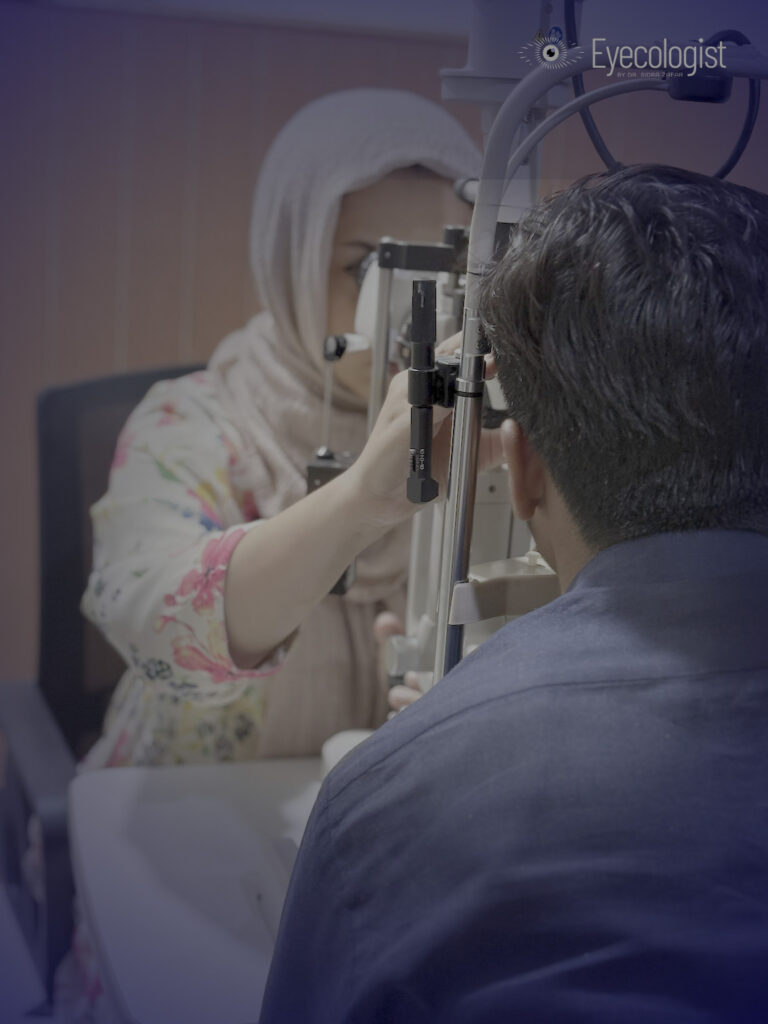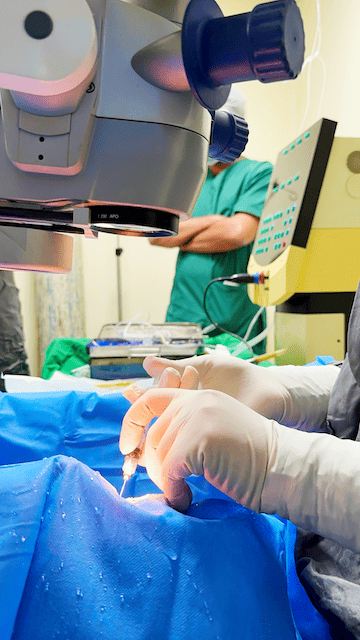Don’t Let Diabetes Steal Vision
What is Diabetic Eye/Retinal Disease?
Diabetic retinopathy is a serious complication of diabetes and one of the leading causes of blindness worldwide. It occurs when prolonged high blood sugar levels harm the delicate blood vessels in the retina. According to the WHO, it contributes to about 5% of global blindness, while in Pakistan, it accounts for nearly 15–20% of avoidable cases.
Many people do not notice symptoms in the early stages, which is why regular eye exams are essential. Warning signs may include blurred or fluctuating vision, dark floaters, poor night vision, or sudden loss of vision.
Early detection and treatment can lower the risk of severe vision loss by up to 95%.
Causes of Diabetic Eye/Retinal Disease
Diabetes can affect your eyes when blood sugar remains high for long periods or after many years of living with the condition. Often, there are no early warning signs because the changes develop gradually. In some cases, the retina’s center responsible for sharp, detailed vision, may be involved. Diabetic retinopathy usually affects both eyes.
Types of Diabetic Retinopathy
- Non-proliferative diabetic retinopathy (NPDR): Early stage with small blood vessel leaks, swelling, or deposits.
- Proliferative diabetic retinopathy (PDR): Advanced stage with abnormal vessel growth, bleeding, and vision loss.
- Other Diabetes-Linked Eye Problems
- Diabetic Macular Edema (DME): Central retinal swelling affecting detailed vision.
- Higher risk of Cataract and Glaucoma.

Diagnosis, Emergencies, and Prevention of Diabetic Eye/Retinal Disease
If you have diabetes, don’t wait for symptoms, schedule a comprehensive eye exam at least once a year. Nearly 40–45% of people with diabetes develop some stage of diabetic retinopathy, and pregnant women with diabetes should be examined as soon as possible. Early detection greatly improves the chances of saving your vision.
Diagnosis
- OCT scans, fundus photography, and fluorescein angiography detect early changes.
- Retinopathy often progresses silently, screening is essential.
- Risks increase with long-standing diabetes, high BP, high cholesterol, or poor sugar control.
Emergencies
- Sudden vision loss, floaters, or shadow-like curtains require urgent care.
Prevention
- Control sugar, BP, cholesterol.
- Exercise, eat healthy, avoid smoking.
- Early treatment with lasers/injections prevents vision loss.
Diabetes and vision are closely linked, taking care of one protects the other.
Diabetes and vision are closely linked, taking care of one protects the other.
Treatment of Diabetic Eye/Retinal Disease
Successful outcomes in diabetic retinopathy depend on timely treatment with the following options:
- Eye Injections: Used to reduce fluid buildup in the retina. Multiple sessions may be required to improve vision and slow the damage caused by leaking blood vessels.
- Laser Treatment: Helps stabilize vision by sealing weak vessels, preserving existing eyesight, and preventing further loss.
- Retinal Surgery: In advanced cases, surgery may be needed to treat bleeding, scarring, or severe vision loss.
Remember, annual diabetic eye exams are essential. Early diagnosis allows for the treatment of issues before permanent vision loss occurs.
Make an Appointment
Book Your Vision Journey Now

